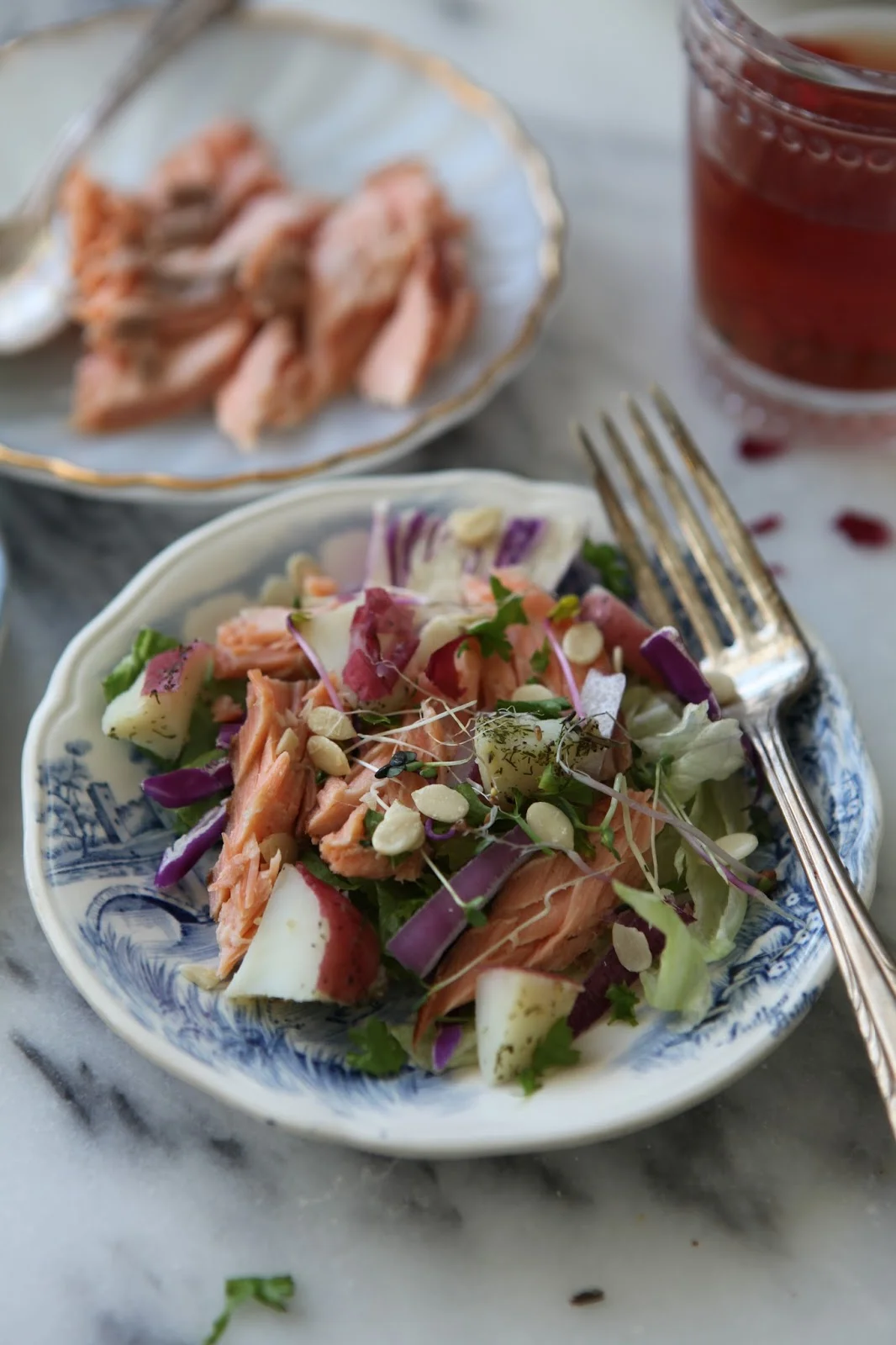Eating Sustainably on a Budget

A diagnosis of an autoimmune condition is discouraging in and of itself. When I received my diagnosis six years ago, I had no option for medication and nutrition was my only route for recovery. Although I recognise in gratitude many of the advances that allopathic medicine has provided us, nutrition counseling is not one of them. Many doctors are not trained or are ignorant of nutritional therapy options. Others even continue to believe that saturated or any fat is unhealthy, making minimal distinction between the many versions of this healthy, necessary component of our diet.
When I opted to treat my condition through diet, I was at a loss that even with the absence of gluten among other things that my symptoms & flare-ups continued. Therein I promptly began researching the healing triggered by cutting grains and legumes from my diet. At this point, I had only recently reintroduced seafood into my diet but knew that my body was craving more. The absence of grains & legumes meant that I was going to require extra nutrition elsewhere, which is where the further reintroduction of meat began. I began slowly with first fish bone broth then graduated onto pasture-raised chicken bone and then grass-fed beef bone broth. My transition afterwards was quite swift: my first meat meal was liver. I had not had it since childhood but for days it was all my body craved.
To completely heal the damage my digestion had suffered pre-diagnosis, I followed the Autoimmune Paleo Protocol. This intricate & quite restrictive yet short-term diet involves avoiding nuts, seeds, eggs, and nightshades amongst other things. You can read more about it here & in my upcoming book, to be published in March 2018 (Random House). What I found to be an element of discouragement during this protocol was that those who do not have access to high-quality produce, meats, seafood, supplements, and even kitchenware would be at a loss. So, as I have navigated frugality on the Autoimmune Paleo protocol & a sustainable plant-centric diet, here are my tips on how to stay on a budget . . .
Eat a Plant-Heavy Diet
Protein is a necessary component of our diet, especially for athletes such as myself, & touted to be a cornerstone of a primal diet. However, having studied Food Archeology & Medical Anthropology, I can confidently state that many of our ancestors had instead a plant-heavy diet. Tubers were plentiful while meat was a treat, as hunting was demanding and sometimes animals were even scarce. Balance your protein to vegetables by following the three-quarters vegetables rule. You can read more about the importance of phytonutrients in vegetables here and the protein-to-vegetable ratio here.
Prioritise your Expenses
I call this investing in the most nutrient-dense foods. This is often sustainably-raised meats & seafood. It entails purchasing foods that have the highest amount of nutrients at the most affordable price.
For meats, be selective & smart about the cuts. Tougher and fattier cuts are cheaper and, with the right recipe, soften into a delectable meal. They also contain more gut-healing collagen, gelatin, & connective tissue. Eating offal or organ meats is also not only sustainable as it uses the entire animal but also cheaper. Incorporate liver, kidney, and decadent bone marrow into your diet.
For seafood, follow the Seafood Watch guide on best fresh options. BPA-free canned seafood such as sardines and mackerel are also great options as they are one of the highest sources of omega-3s.
If you do not consume animal protein, make sure to invest in organic, sprouted nuts & seeds such as almonds or hemp seeds (a complete protein that does not need to be sprouted) as a source of quality protein.
Plan your Meals
Having a week's worth of meals planned and, preferably, batch-cooked over the weekend or during your allotted free time will keep you on your budget by reducing the possibility of wasted food or depending on eating out during the work week.
Shop Accordingly & in Bulk
Planning meals also provides a dependable grocery list of items that you will definitely use instead of buying produce that you do not have a definite idea of what to do with. Many of us are all too familiar with the bottom-of-the-drawer wilted greens or shrunken beets . . . Shop according to your meal plan's recipes & buy the dried goods it calls for in bulk, which is often the cheaper option.
Whole Foods over Supplements
With the heightened awareness of healing through nutrition & the hype of herbs or supplements, it's tempting to cash out. However, they're often unnecessary and spending that money on food instead is most always a more nutrient-dense option. You also benefit from avoiding filler, possibly autoimmune-triggering ingredients with which most supplements are packed. Unless it is recommended by a health practitioner or something you cannot get from food, trust your diet.
Some great examples are drinking bone broth instead of taking powdered collagen or gelatin, which it naturally contains; eating fermented foods such as sauerkraut or drinking kvass for probiotics; eating green banana flour, plantains, or bananas for prebiotics; and eating dark, leafy vegetables for bone supporting vitamins & minerals. For omega-3s, opt for fresh, cold-water fish that's been sustainably raised or BPA-free canned sardines or mackerel instead of fish oil pills that often have gone rancid.
Make & Eat at Home Instead
Many of the foods we buy at grocery stores are things we can make at home. Unfortunately, time is also of essence & many of us are strapped. Make a list of your biggest expenses in regards to packaged or pre-prepared foods. Is it kombucha, kale chips, bone broth, fermented vegetables? Try making one or more of these on the weekends to save yourself time and money. Dried fruits is a great example here, too. A little bag of dried mangoes, for instance, cost between $7-10. If you like to nosh on dried fruits & bars, invest in a dehydrator—it doesn't have to be a $300something Excalibur—and make your own.
Shop Online & at Multiple Stores
Don't shop for everything at only one store. Sourcing seasonal produce from the farmer's market is often the same price or cheaper than the grocery store counterpart but higher in nutrition (due to minimal travel time from farm to table). If you have access to a farmer's market, shop there for vegetables & fruits. Use this guidefor what to buy organic. Farmer's markets are also a great place to find deals for locally-raised, sustainable meats. Otherwise, source them from a store like Whole Foods, MOM's Organic, Sprouts, or other health-food stores. As this is their specialty, the prices will be more reasonable than those in other grocery store chains. As previously mentioned, this is the area in which I recommended investing in your diet so to say.
You'll discover that shopping at various stores allows you to stretch your money further as certain stores have better deals on particular foods than others do. For dried goods, from nuts to oils to any packaged foods, shop online. I use iHerb—use code QRN510 for 5% off; Vitacost—get $5 off; and Thrive Market—get 15% off!


